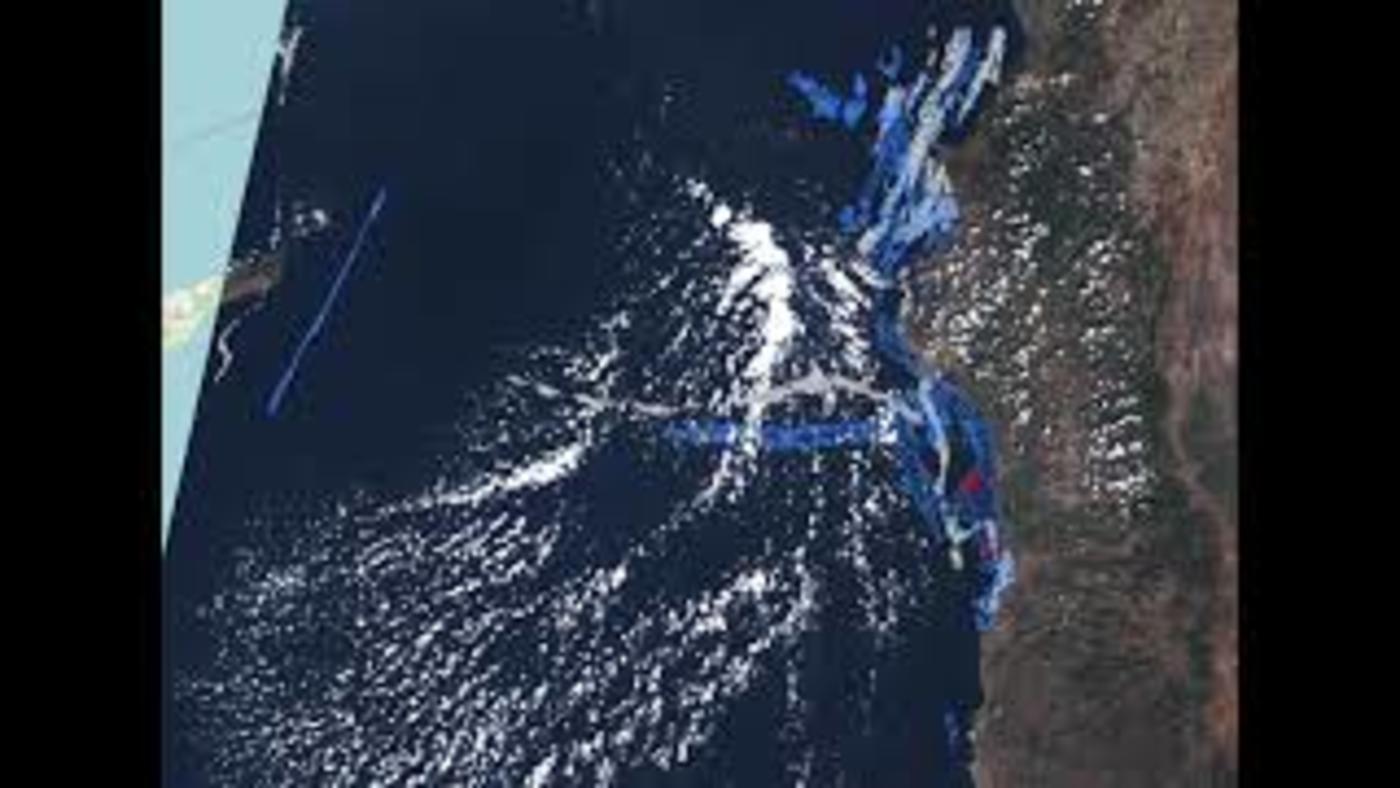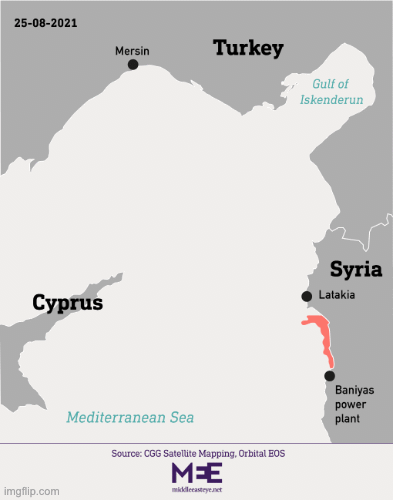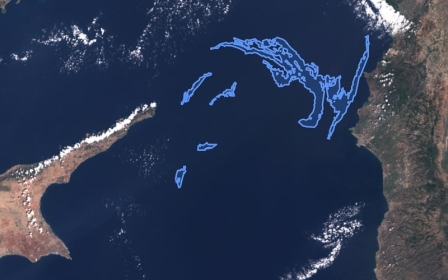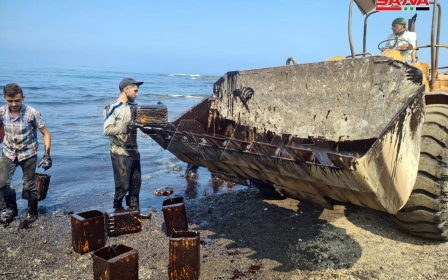Syria oil spill hits Turkey as disaster spreads in eastern Mediterranean
Oil leaking from a refinery in northern Syria has reached the southern shores of Turkey, in a disaster that environmental experts say will impact the eastern Mediterranean for years to come.
Forecasters also say satellite imagery still shows a high quantity of oil around Syria's Baniyas thermal power plant, raising questions about when - or if - the leak was contained.
The spill started on 23 August, when a fuel tank containing roughly 12,000 cubic metres of fuel at the run-down plant on the government-held west coast began to leak.
The oil moved west towards Cyprus, but sea currents then pushed the 500-square kilometre slick northwards towards Turkey's southern coast, where coin-sized bits washed ashore in Hatay province on Friday.
New MEE newsletter: Jerusalem Dispatch
Sign up to get the latest insights and analysis on Israel-Palestine, alongside Turkey Unpacked and other MEE newsletters
Hatay governor Rahmi Dogan said that six tow boats, including one with waste-collecting capabilities, had been operating off the coast of Hatay to clean the area.
“Some of the waste came close to our shores, but they are really small, like coin-sized parts,” he said. “We are taking every measure possible.”
Erkan Saglamtas, head of a local fishery association, told Turkish news wire DHA that while the pollution so far had been limited, he anticipated more would come.
“We are facing a serious environmental disaster," Saglamtas said.
Oil circling back to Syria
As Turkey braced for further oil, forecasters said the bulk of the slick still adrift will most likely make its way back to the Syrian coast, carried by a major clockwise-spinning gyre between Cyprus, Turkey and Syria.
"It's gone to Cyprus and then back to Syria," said Giovanni Coppini, an expert in oil spill trajectory forecasting with the Euro-Mediterranean Center on Climate Change.
Northern Cyprus may also see oil reach its coastline, Coppini said, but that will be "thinner" oil, like the coin-like bits currently reaching the Turkish coast.
Forecasters also raised questions about when the oil leak actually stopped.
Syrian state news agency Sana reported that maintenance teams had "controlled" the fuel leakage on August 23, but photos published five days later showed men putting reeds in the oily surf.
Syrian authorities are understood to have told pollution monitors that the leak was contained on 27 August. However, satellite imagery taken on Thursday morning still showed high quantities of oil around the refinery.
Juan Pena Ibanez, chief executive of Orbital EOS, a company that analyses the spread of oil slicks, told Middle East Eye on Friday that oceans or seas normally disperse oil very quickly after a leak.
He said that the high concentration of oil suggests that the refinery may still be leaking. "Otherwise, it would be very, very unlikely that there's so much oil there," he said.
Coppini agreed the imagery suggested the spill could still be happening. However, he also said it was also possible that the oil had been carried days ago towards the Syrian coast and then sent back offshore by currents.
"So it may seem that there is a lot of oil, but it is the same oil staying there," Coppini said.
The World Wide Fund for Nature (WWF) has warned that the spill could have "potentially devastating consequences for marine biodiversity and ecosystems" in the Mediterranean, adding that it "poses serious risks also for the communities and businesses that depend on tourism and marine resources for their livelihoods".
The effects of the spill will be felt for more than a decade, Mauro Randone, coordinator of the Sustainable Blue Economy Programme at the WWF Mediterranean Marine Initiative, told MEE earlier this week.
"The minimum is 15 years, and then you go upwards from there," he said.
Middle East Eye delivers independent and unrivalled coverage and analysis of the Middle East, North Africa and beyond. To learn more about republishing this content and the associated fees, please fill out this form. More about MEE can be found here.






